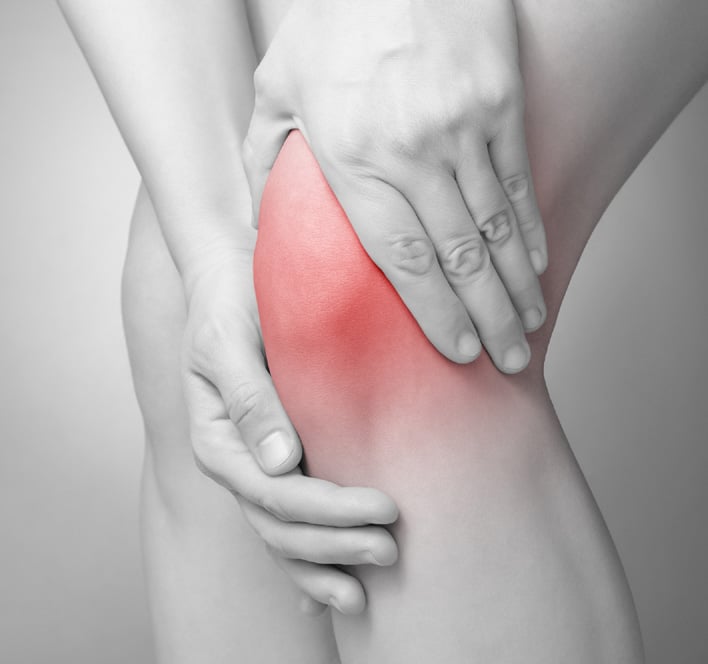Loose bodies are fragments of bone and cartilage that break free because of a traumatic injury or deterioration due to osteoarthritis. These fragments float around in the knee joint fluid, and in this state, they may not cause any symptoms. However, they can get caught in the joint when the knee is flexed or extended. The entrapment of fragments can cause symptoms that can affect your mobility and comfort.
The loose bodies do not go away whether you have symptoms or not. And, as the bone and cartilage deteriorate further, more and more loose bodies are added into the fluid, increasing the chances of experiencing symptoms. If you suspect you have loose bodies in your knee, ask an orthopedic knee doctor at NJ Spine & Orthopedic about your symptoms. Our skilled doctors and helpful Concierge Team can help you every step of the way during your treatment.
How Do Loose Bodies Affect the Knee Joint?
Loose bodies in the knee joint can not only cause pain and swelling, but they can also interfere with the function of the knee joint. For example, If a loose body gets in between the thigh bone and the shin bone in the back of the knee, this can prevent the knee from flexing and bending. Conversely, if a fragment inserts itself between the thigh bone, shin bone, or underneath the kneecap on the front of the knee, this can prevent the knee joint from extending the leg.
Also, because there is no opportunity to naturally expel loose bodies from the knee fluid or absorb them into the body, they remain there until they can be physically removed. If they aren’t removed, this increases the chances that you will experience symptoms related to these loose bodies. Not removing them could result in recurring symptoms, such as:
- Pain
- Diminished mobility range
- A catching or snapping sensation when moving your knee
- Popping sounds
- Knee buckling
- The knee could be intermittently locked into one position
The only way to ensure that the loose bodies will not present a problem is to remove them by surgery. A surgeon can use minimally-invasive techniques to lessen soft tissue injury, lowering the chances of complications and reducing recovery time.
The Differences Between Arthroscopy and Arthrotomy Surgeries For Loose Bodies in the Knee
Usually, arthroscopy surgery is needed to remove the loose bodies. This surgery only requires two small incisions. First, the orthopedic surgeon uses one incision to insert a camera to allow a visual of the loose bodies. Then, surgical instruments that remove the fragments are inserted into the body using the other incision.
An orthopedic surgeon may also have to perform an arthrotomy surgery instead of arthroscopy to remove large loose bodies. The difference is that an arthrotomy surgical incision is larger to get a better image of the area and fragments and make removing larger pieces easier. However, instances are rare that you would need arthrotomy surgery instead of arthroscopy. Make sure you meet with your doctor to determine which option is best for you.
Consult the Orthopedic Knee Specialists at NJ Spine & Orthopedic About Your Knee Pain and Other Symptoms
The NJ Spine & Orthopedic knee surgeons can remove the loose bodies in your knee with minimally-invasive surgery options. This expertise will provide the relief you need from your symptoms and make sure you can get back to your daily life without issue.
The orthopedic surgeons at NJ Spine & Orthopedic specialize in performing arthroscopy surgery when traditional treatment methods won’t work to solve your problem. Call our Concierge Team today at (866) 553-0612 or complete our contact form if you are experiencing knee pain and other symptoms.

